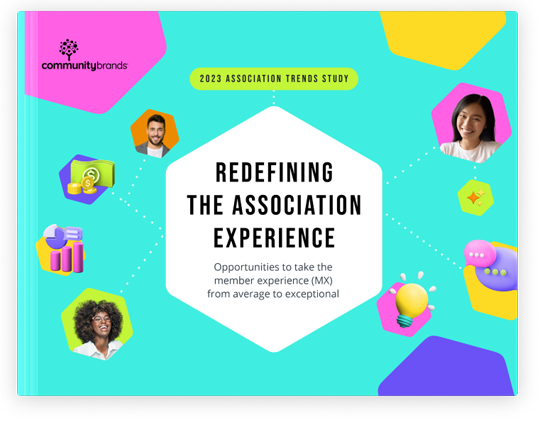Your association is all about members, right? After all, it’s a member-based organization. So, it just makes sense for your association to be member-centric. Making your association more member-centric can help you deliver greater member value, improve the member experience, and ultimately improve member acquisition, engagement, and retention.
But what does it really mean to be member-centric? And how does that inform how your association operates?
Let’s take a look.
What does being member-centric mean?
Being member-centric means that everything from your association’s strategies to day-to-day operations must help to drive a great member experience. That’s what will bring in new members, keep them engaged, and keep them around year after year.
Three ways to make your association more member-centric
Here are three great ways to make your association more member-centric:
1. Know your members better.
Being more member-centric starts with understanding your members better. For example:
- What are their needs and interests?
- What are their communication preferences?
- What would make their membership more valuable and more convenient?
Here are a few ways to get to know your members better:
- Ask for member feedback – Send a member satisfaction survey at least once each year to ask about the member experience. You might also set up a member advisory group and meet with them regularly to get their input on how to improve member benefits and the member experience. Establish a team that meets regularly to review member feedback and fine-tune the member experience.
- Collect and use member data – Use your AMS to collect and analyze data about your members’ career stages, interests, and behaviors. Then, put the information to work.
For example, use the information to provide members with personalized communications and benefits. For instance, recommend new industry reports or new services offered by your organization that will help them in their specific career stage.
You can also use the member data you collect and analyze to gain deeper insights into your members. For example, you can spot membership trends and then decide what you could do to reverse trends that might be moving in the wrong direction or find new ways to improve the member experience.
- Set up a preference center – Give members an easy way to let you know how and when they want to hear from you: Set up a preference center. A preference center is an online portal that gives your members an easy way to control what communications they receive from your organization and how often they receive them. It also gives you another way to gather more of the data you need to improve member communications.
2. Consider the member journey.
Your members’ needs and expectations evolve as they move through their careers and their membership with your organization. Make sure you’re doing all you can to give members a great experience every step of the way. For example:
- Make it easy to join – When potential new members land on your website, make sure there’s a clear and compelling path for them to become a member. Then, when prospects are ready to join, make sure the process is simple by streamlining your online membership form. Keep in mind that lengthy forms are a turn-off, so be sure to ask for only what’s needed to process their membership. You can ask for more data later.
- Provide a great member onboarding experience – Make your new members feel welcome right away. Start by thanking them for their membership. Then, give them a short, simple list of what they can expect next and where to go for information. Get new members involved right away by asking them to connect with your organization and other members. For example, invite new members to a discussion forum for new members in your online community.
- Inspire and enable members to get connected – Speaking of online community, connect your members with industry information as well as education, volunteer, networking, and job opportunities by offering an online community. An online community helps you elevate and encourage networking among your association’s members.
- Offer members help through each stage of their careers – Think about what members need in each stage of their careers and how your organization can support them. For example, offer students, new graduates, and those early in their careers with opportunities to find internships, connect with mentors, and find jobs. Provide mid-careerists with networking and learning opportunities and connect them with their next jobs to grow their careers. Connect late careerists with interns, mentees, and new hires.
3. Work more efficiently.
Working more efficiently is a member-centric activity when you consider that it gives your members a smoother member experience and frees your staff’s time to focus on delivering even greater member value. Here are some ideas:
- Automate email communications – Automating process-related emails will free your staff’s time to work on more strategic activities. For example, automate email communications to members based on member actions, such as joining the organization or paying membership dues. Then, when members join your organization and pay their annual dues, they can receive an automated email confirmation for joining that includes a receipt of payment.
- Provide an auto-renewal option – Sometimes, members simply forget to renew. An effective way to address this issue is to offer an option to automatically renew membership, with the membership fee charged to the member’s credit card. This approach makes things easier on your members and helps reduce the number of lapsed memberships, so your staff will spend less time on the renewal process.
YourMembership AMS supports auto-renewals and offers account updater functionality to help ensure that your recurring revenue remains intact even if your members’ card information changes.
- Automate reports – You can schedule important, timely membership reports to send automatically via email to yourself or to others in your organization. For example, set up a workflow in your AMS to automatically send a monthly membership summary to your executive director and board of directors.






